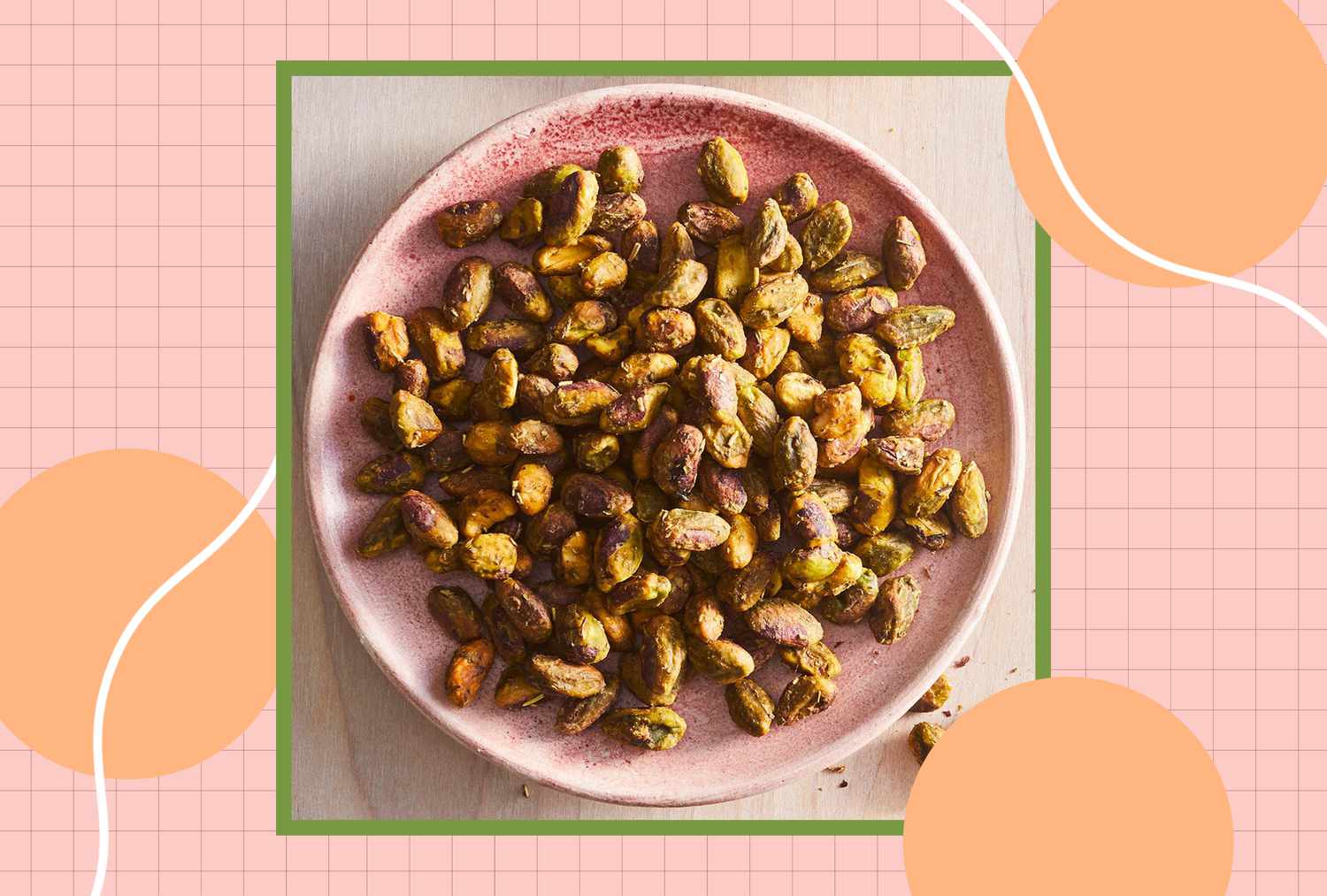There are so many wonderful things about nuts—including how they’re a tiny package packed with both fiber and protein. Both of these nutrients help keep you full by slowing down digestion and steadying your blood sugar levels to provide sustained energy.
When it comes to protein in particular, some nuts shine in that department more than others. In fact—some nuts are just as protein-rich as an egg. Since an egg is one of the best high-protein foods you can eat (with 6 grams of protein) we often use it as a reference point to find out how other foods stack up. Keep reading to learn about the 3 nuts that equal–or exceed–the protein in an egg. But first: Any guesses?
1. Peanuts
Protein: 7 g/oz (1/4 cup)
Peanuts are technically a legume that grows underground, but they are consumed as nuts for their taste, texture and nutritional value. There is a reason why peanuts are America’s favorite nut: They are affordable, shelf-stable and nutritious, boasting more than 7 grams of protein and 2 grams of fiber per ounce-serving.
Enjoy peanuts by the handful as a filling snack, or add them to savory dishes, like our Stir-Fried Celery with Peanuts.
2. Almonds
Protein: 6 g/oz (23 almonds)
Almonds check off the nutritional and culinary criteria. This nut is a powerhouse, offering a range of nutrients, including fiber and antioxidants, both of which contribute to good heart health. These nuts provide 3.5 grams of fiber for every 23 kernels, which provides more than 10% of your daily fiber needs.
Add a dash of unsalted almonds as a salad topping, use them as a main ingredient for cakes, like our Orange & Almond Coffee Cake, or flavor your almonds by baking them and making a batch of Everything-Seasoned Almonds.
3. Pistachios
Protein: 5.95 g/oz without shell (29 grams)
Pistachios deserve an honorable mention because they also have a stellar nutritional profile, including blood pressure-regulating potassium, immune-supporting vitamin B6, and bone-building manganese. Emerging research shows that consuming pistachio regularly may improve the health of your gut microbiome by increasing the concentration of beneficial bacteria.
Pistachios pair well with proteins like fish and chicken. Use a processor to blend pistachios and breadcrumbs into a chopped or fine grind and drench your fish or chicken filet with the coating before cooking—check out our Pistachio-Crusted Tuna Steaks and Pistachio-Crusted Chicken with Warm Barley Salad.
Other Nuts To Consider
While these nuts don’t have the same or more protein than one egg, they deserve a moment to shine and are worthy to include in your meals and snacks.
Cashews
Protein: 4 g/oz (1/4 cup or 18 whole cashews).
Cashews may not get the same attention as other nuts, but they offer a slew of essential nutrients that contribute to good health. You can find one serving of cashew delivering one-third of our daily recommended intake of copper, a trace mineral that supports our nervous and immune systems and plays a role in making energy. Plus, cashews have heart-healthy benefits. One study indicates that consuming cashews every day for 12 weeks may improve the HDL cholesterol and blood pressure levels of people with type 2 diabetes.
Eat these crescent-shaped nuts as a snack or boost their flavor with curry powder. Cashews also complement recipes like stir-fries and pasta. Try our Three-Pea, Cashew & Tofu Stir-Fry and Creamy Shrimp & Mushroom Pasta for an extra crunch.
Walnuts
Protein: 4 g/oz (1/4 cup or 14 walnut halves)
These wrinkly-looking nuts have 2.5 grams of plant-based omega-3 fats, which may be linked to improved brain health, gut health and male reproductive health.
Enjoy walnuts plain, pair them with a fruit (Banana & Walnuts are a great combo) or sprinkle them onto salads. Walnuts not only add a crunch, they also pair well with feta cheese, like our Spinach-Strawberry Salad with Feta & Walnuts.
Hazelnuts
Protein: 4.25 g/oz (21 whole kernels)
Hazelnuts are full of nutrients, delivering almost 87% of your daily recommendation of manganese per serving, a mineral that supports energy production, reproduction, blood clotting, bone development and more., One meta-analysis also found that eating hazelnuts regularly may decrease “bad” LDL cholesterol levels and reduce hemoglobin A1C (a blood sugar measurement).
Hazelnuts may be most well-known for being the hero ingredient of Nutella (which you can make at home), but they can also be added to cooked veggies, such as our Charred Green Beans with Mustard Vinaigrette & Hazelnuts.
Brazil nuts
Protein: 4.01 g/oz (28 grams)
Brazil nuts are most notable for their high levels of selenium, a mineral essential for thyroid function, reproduction and DNA production. These nuts also boast anti-inflammatory properties that support heart health.
Eat one to three whole Brazil nuts a day, or make your own mixed nuts or trail mix with Brazil nuts. You will be pleasantly surprised with how filling they are just with a couple of pieces.
Keep In Mind
This article is meant to use an egg as a reference point to indicate the protein content in nuts, and not to imply that one food is superior to the other. As you decide what foods are right for you, it’s important to remember that while a serving of certain nuts has the same or more protein than one egg, nuts generally have more calories than eggs. All foods can fit into a healthy and balanced diet, and understanding all a food offers (such as protein, calories, fiber, vitamins and minerals!) can help you make the best decision for you.
The Bottom Line
There are a host of reasons to eat nuts. If you were to look solely at the protein content, then peanuts, almonds and pistachios are our top picks. However, other nuts like cashews, walnuts, hazelnuts and Brazil nuts are also protein sources. Nonetheless, enjoying a variety of foods that offer proteins, complex carbs, fiber and healthy fats enables your body to feel its best.
#Nuts #Protein #Egg,
#Nuts #Protein #Egg
